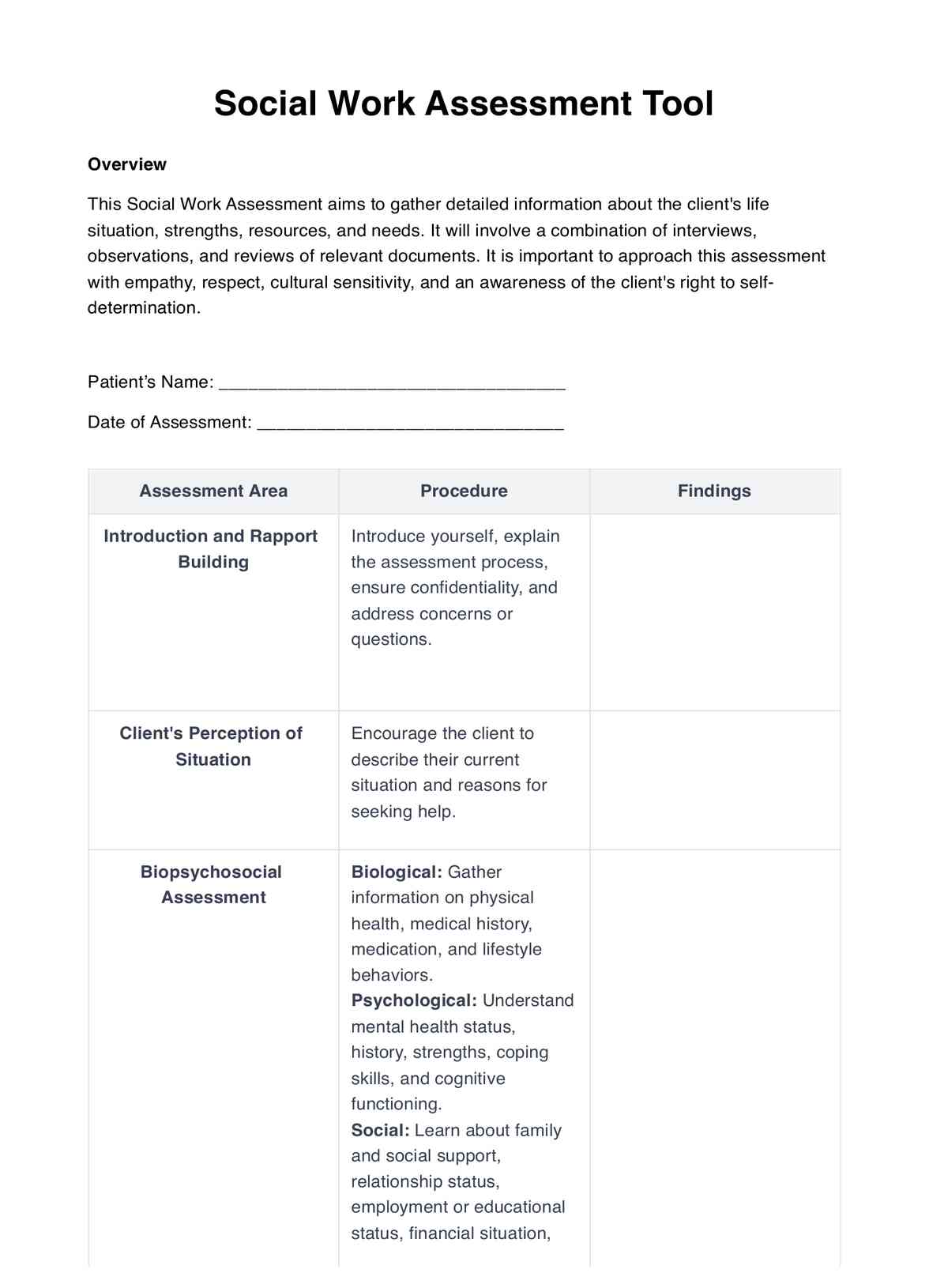Social workers across various settings, including schools, hospitals, community centers, and counseling services, use social work assessment tools.

Social Work Assessment Tools
Learn about comprehensive and effective social work assessment tools. Find how they can help streamline the assessment process in social work.
Use Template
Social Work Assessment Tools Template
Commonly asked questions
These tools are used when a client enters a service and throughout their engagement with the service, especially when their circumstances change or for regular reassessments.
These tools guide the social worker through a comprehensive assessment process, capturing a wide range of information about the client's situation, strengths, risks, and needs. The information gathered is then used to formulate a tailored intervention plan.
EHR and practice management software
Get started for free
*No credit card required
Free
$0/usd
Unlimited clients
Telehealth
1GB of storage
Client portal text
Automated billing and online payments











